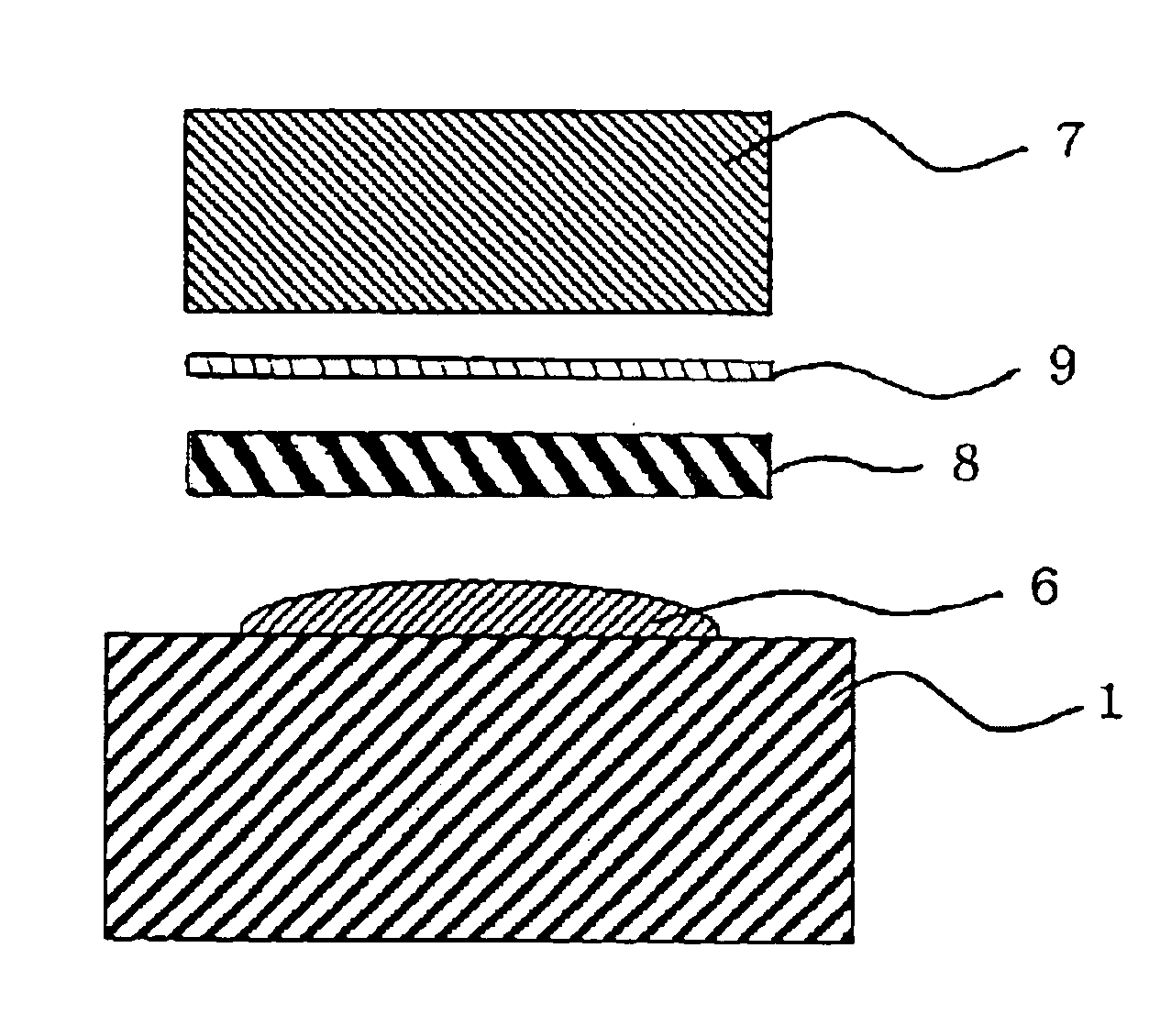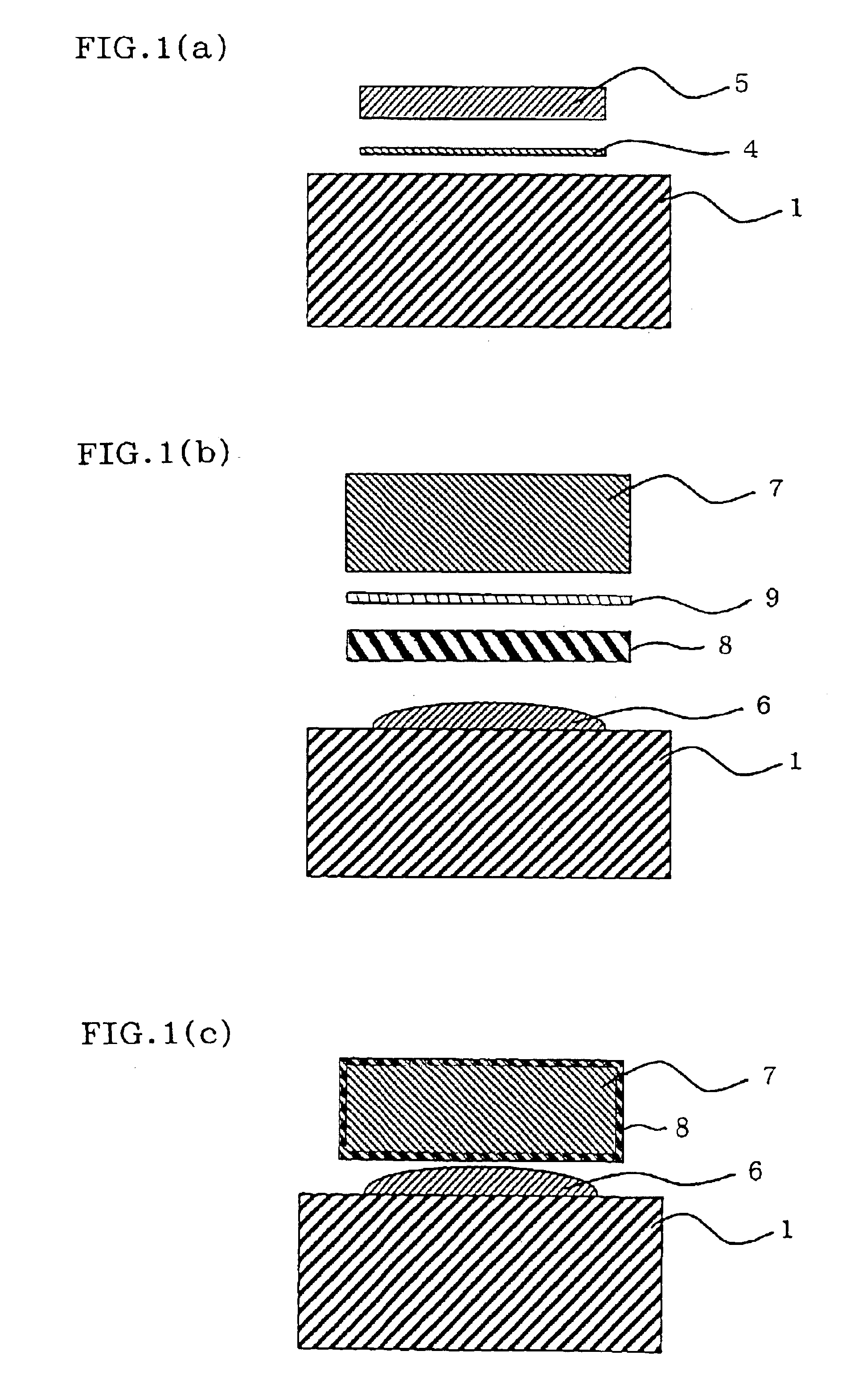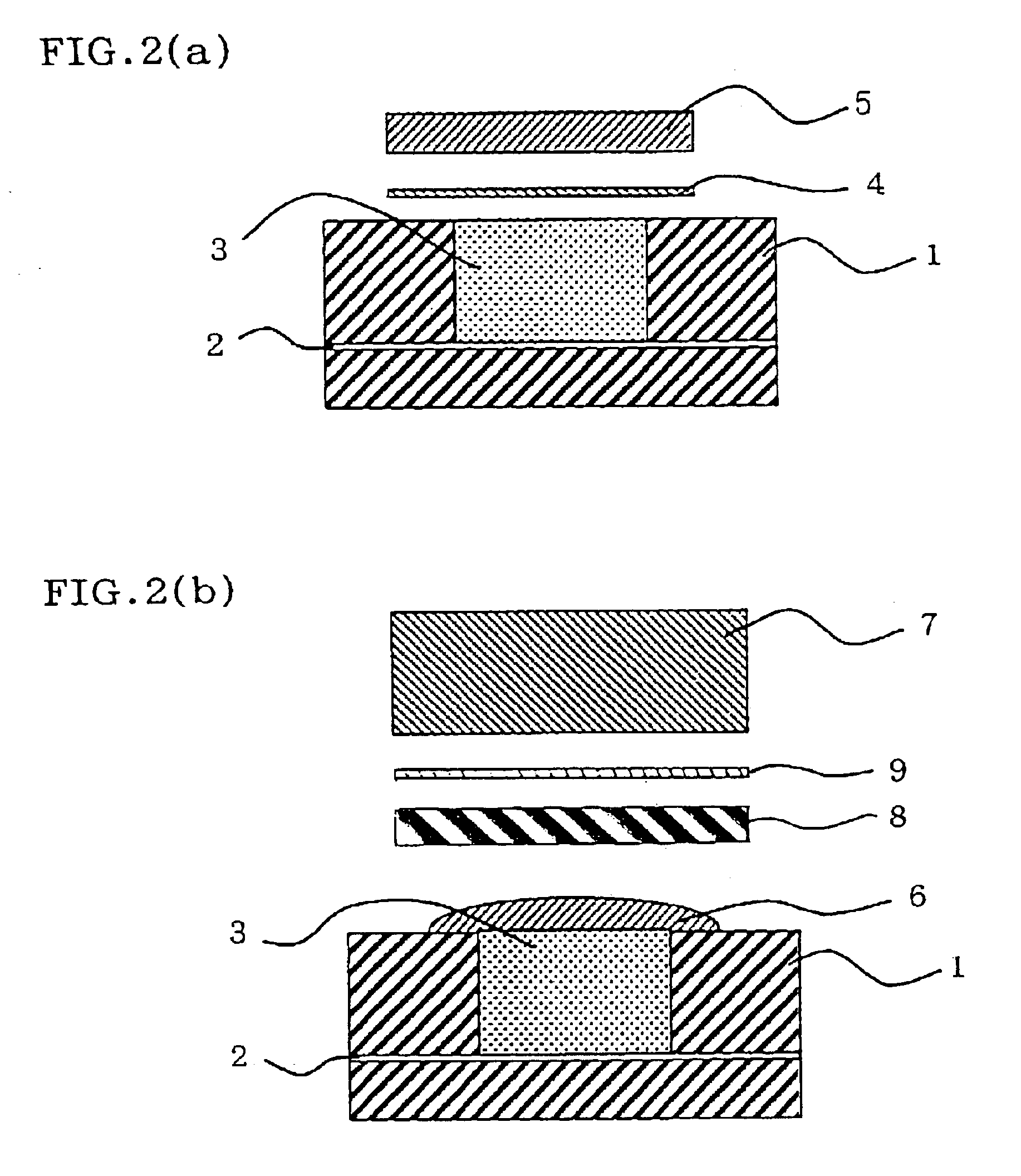Bonded member comprising different materials and production method thereof
a technology of bonded members and different materials, applied in the field of bonded members, can solve the problems of unfavorable increase in production costs of these composite members, inability to achieve desired bonding strength and air tightness, and cracks in the vicinity of the interface, so as to achieve the effect of reducing the proof stress of au soldering materials and hardly lowering the bonding strength of bonded members
- Summary
- Abstract
- Description
- Claims
- Application Information
AI Technical Summary
Benefits of technology
Problems solved by technology
Method used
Image
Examples
examples
[0051]Hereinafter, examples of the present invention will be described. However, it is needless to say that the present invention shall not be limited to the following examples.
examples 1 to 8
[0052]On an AlN ceramic base material (sintered body with an AlN purity of 99.9%, flexural strength: 360 MPa), 5 μm Ti foil and a 1,000 μm pure Au soldering material were placed, and they were molten by heating in a vacuum atmosphere at 1,100° C. for 10 minutes so as to form an Au precoat layer (thickness: 800 μm). As a result of measuring the hardness (Vickers hardness (load: 100 g) Hv0.1) of the precoat layer, it was found to be 45 to 55. Further, when these bonded layers were removed by grinding so as to check occurrence of cracks in AlN, it was found that no cracks occurred in AlN.
[0053]On the precoat layer, a pure Cr plate having a thickness of 2 mm and a diameter of 6 mm, pure Au having a thickness of 200 μm, and an Inconel 601 (Fe-61Ni-23Cr-1.4Al) or Ni terminal having a diameter of 5 mm and a length of 20 mm were placed in order mentioned above. Then, they were heated in a vacuum atmosphere under a load of 10 MPa at 800° C. for 1 hour so as to be solid-phase bonded Examples ...
examples 9 to 13
[0056]As in the foregoing Examples 1 to 8, a precoat layer was formed on an AlN ceramic base material, a Kovar (Fe-29Ni-17Co) or Ni terminal having a diameter of 5 mm and a length of 20 mm and plated with Cr to a thickness of 20 μm was placed on the precoat layer, and they were solid-phase bonded at 800° C. for 1 hour under a load of 10 MPa Examples 9 and 11.
[0057]The foregoing bonded member having the Ni terminal was kept in air at 700° C. for 100 hours Example 10, while the foregoing bonded member having the Kovar terminal was kept in air at 700° C. for 100 hours or 800° C. for 100 hours Examples 12 or 13. In all these bonded members, the hardness Hv0.1 of the precoat layer was 45 to 55, which was found to be unchanged. When the bonded layers were removed by grinding so as to check occurrence of cracks in AlN, it was found that no cracks occurred in AlN. The foregoing tensile test was conducted on the bonded members of the foregoing Examples 9 to 13. The results are shown in Table...
PUM
| Property | Measurement | Unit |
|---|---|---|
| thickness | aaaaa | aaaaa |
| temperature | aaaaa | aaaaa |
| temperature | aaaaa | aaaaa |
Abstract
Description
Claims
Application Information
 Login to View More
Login to View More - R&D
- Intellectual Property
- Life Sciences
- Materials
- Tech Scout
- Unparalleled Data Quality
- Higher Quality Content
- 60% Fewer Hallucinations
Browse by: Latest US Patents, China's latest patents, Technical Efficacy Thesaurus, Application Domain, Technology Topic, Popular Technical Reports.
© 2025 PatSnap. All rights reserved.Legal|Privacy policy|Modern Slavery Act Transparency Statement|Sitemap|About US| Contact US: help@patsnap.com



